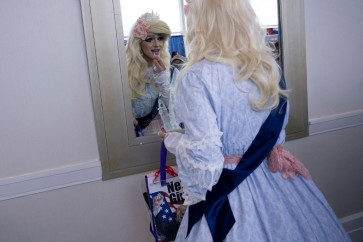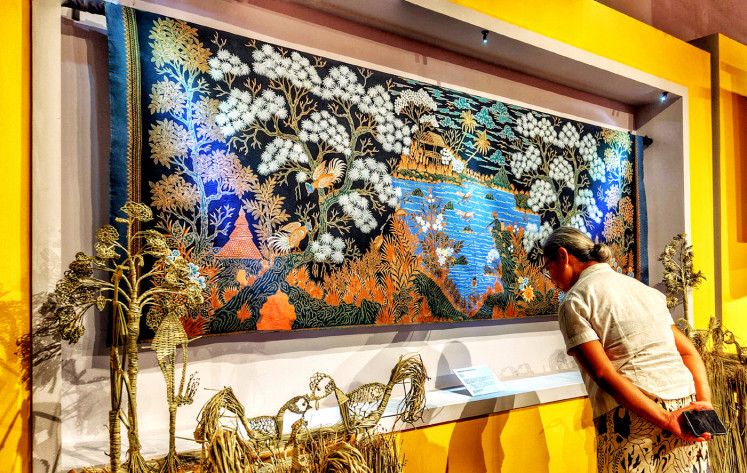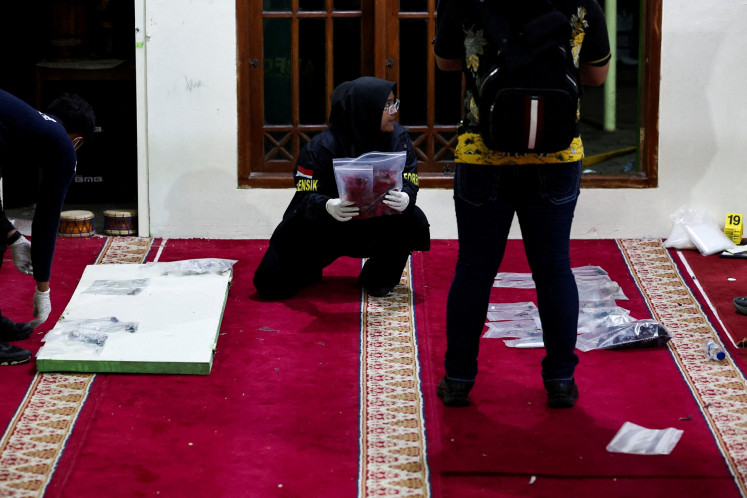Popular Reads
Top Results
Can't find what you're looking for?
View all search resultsPopular Reads
Top Results
Can't find what you're looking for?
View all search resultsWe drank a 172-year-old wine. How’s it taste?
In a chilly wine warehouse in the Bronx two weeks ago, a famous Portuguese winemaker pried ancient corks from 5-gallon glass demijohns of 19th century Madeira.
Change text size
Gift Premium Articles
to Anyone
I
n a chilly wine warehouse in the Bronx two weeks ago, a famous Portuguese winemaker pried ancient corks from 5-gallon glass demijohns of 19th century Madeira. Was the wine inside still drinkable? Madeira ages longer than other wines, but 150-plus years?
I won’t keep you in suspense. Amazingly, the answer was yes.
One demijohn held a dry sercial Madeira from 1846. Dry, spicy, tangy, and rich, it had piercing acidity and fresh, spicy aromas that lingered even in an empty glass. Another from the same era, a medium-dry apricot-colored verdelho, smelled like apricot, tobacco, and rose petals, and still had an opulent, multi-layered fruitiness that made you want to take another sip. And both are more than 170 years old.
The wines are from a collection of 18th and 19th century Madeiras discovered last year during a renovation of the Liberty Hall Museum in New Jersey. And on Dec. 7, Christie’s will offer them along with some regular-sized bottles of Madeira dating from 1796, at a sale in New York.
Francisco Albuquerque, winemaker for the Madeira Wine Company, along with cork experts from Apcor, the Portuguese Cork Association, and wine specialists from Christie’s were gathered at the warehouse to oversee the opening and recorking of the demijohns, and check to see that the wine was still alive and kicking.
But surprise! The liquid in four of the demijohns turned out to be old bourbon, not Madeira. Edwin Vos, Christie’s head of wine for Europe and a Madeira expert, first thought it might be rum. The bourbon will go under the hammer, too. Smooth and round, the one I tasted was excellent, but not nearly as complex and delicious as the Madeiras.
So how did these bottles get saved from oblivion? Thank Google.
Liberty Hall, originally constructed in 1772, was expanded to a 50-room family residence by the prominent, politically active Kean family, which owned it from 1811. When John Kean Sr. inherited it 12 years ago, he began turning the building into a museum, which he now heads.
Last year, during a renovation, they discovered one of the largest collections of 18th and 19th century Madeira in the United States in the attic and behind a wall in a dirty, cobwebbed cellar. It included about 42 demijohns and a couple of dozen bottles of Lenox Madeira, imported by the late Robert Lenox in 1796, and probably hidden during Prohibition. Some were empty, some were not.
“I knew wine deteriorated in hot conditions, so I thought the wine in the demijohns would all be spoiled by spending so many years in the attic,” admits Kean. “I was prepared to give them to staff members to use for making lamps.”
Luckily, a young museum docent Googled up information about old Madeiras and some of the names on the bottles, and convinced Kean they could be worth something.
Enter Christie’s. When the auction house heard about the discovery, an excited Vos, Christie’s Madeira expert, visited and put in an auction proposal. “There’s not a lot of old Madeira available,” he says. “And you could say it’s the most underrated fine wine in the world.” Some was on offer in Christie’s very first auction in 1766.
Besides some bottles of 1796, Vos selected eight demijohns that seemed in the best shape and had some indication of age, as he explained while showing me a photo of the attic on his iPad. One demijohn was dated by the original paper tag tied around the neck on which “1846, recorked in 1871” was written in faded copperplate hand.
Madeira comes from steep vineyards on the mountainous, volcanic island of the same name about 400 miles west of Morocco in the Atlantic Ocean. Like Port, it’s a fortified wine, which means it’s dosed with a dollop of brandy during fermentation. Long, long ago, producers discovered that unlike ordinary vino, it’s improved by heat and in fact, seems nearly indestructible.
Which is why the liquid inside at least some of these demijohns survived in the attic of Liberty Hall for decades.
To preserve the longevity of aromas and flavors, Vos says Madeira bottles should be recorked every 20 to 30 years.
It’s a delicate operation.
At a table covered with white cloth, Albuquerque carefully cut the wax seal, wiped the top of the cork and removed it carefully with a two pronged corkscrew known as an Ah-so, then examined it for tiny insects. (Yes, really.) Microscopic analysis can prove the actual age of the cork, which would have been harvested about 18 months before its use.
Apcor was tasked with providing the right corks, requiring precise measurement of the bottleneck. “A single cork usually contains 800 million cells, the almost perfect corks we’re using today contain many, many more,” explained Carlos de Jesus, operating director of Apcor. There was no worry about cork taint—a new recently invented software technology is able to guarantee corks free of taint. But the corks will have to be redesigned; temporary ones were inserted instead.
Back in the day, Madeira was the prestige drink for wealthy Americans, reportedly used to toast the signing of the Declaration of Independence and popular in Washington long before bourbon became a Congressional drink.
Read also: Vintage 1774 French wine sells for record 103,700 euros
American financier John Pierpont Morgan liked to sip old vintages while cruising on his yacht Corsair. The oldest I’ve ever sampled was a Borges Bual Madeira from 1780, a vintage which could have been drunk by Thomas Jefferson. It was still delicious, with flavors of caramel and bright candied fruit, its lively acidity intact after more than two centuries.
Sadly, though, Madeira went through a century-long slump, only emerging again in the past few years. The chance to taste history has been inspiring new group of collectors to seek out old Madeiras. In 2017, a Dutch collector paid the record sum of $39,000 for one bottle from 1715. Christie’s has made rare Madeira a regular fixture in its final round of wine auctions before Christmas.
It’s easy to see the appeal of a single bottle of Madeira. But who wants to buy a heavy demijohn that would be a struggle to pour from? Vos admitted that his original preference was to rebottle the wine from each demijohn into individual bottles. That’s what nineteenth century importers did, but today regulations don’t permit it without a bottling license.
Still, I get the appeal: As I sipped the 1846 I was thinking that was the year the U.S. government annexed Texas and Sonoma started a rebellion against Mexico and proclaimed the Bear Flag Republic of California.











